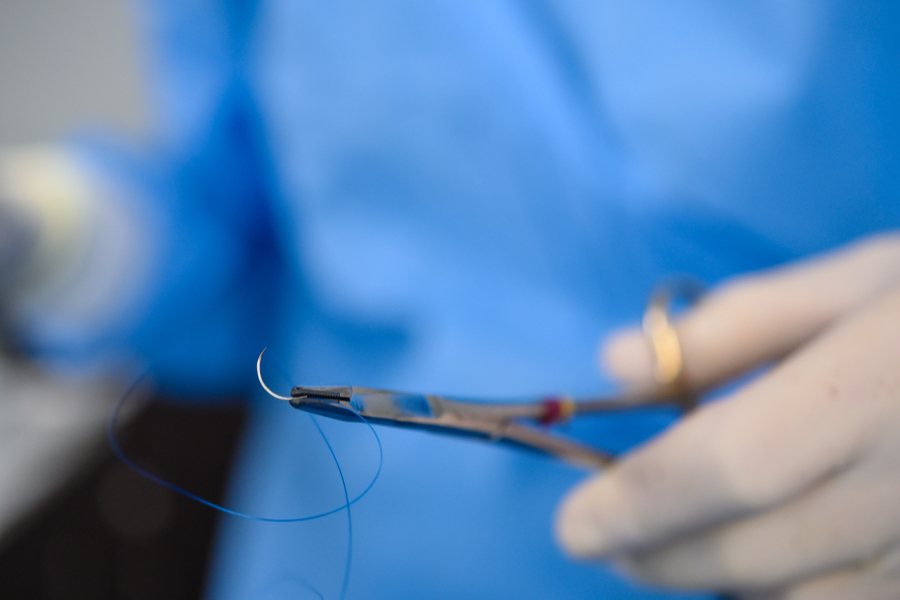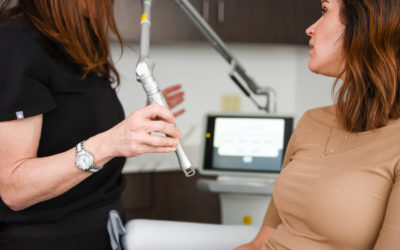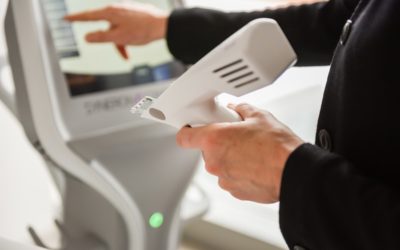A thread lift is an in-office, minimally invasive procedure that you can have performed on a Friday, and by Monday expect to see a lifted and refreshed appearance, hence the nickname popularized by the media, “lunch break lift.” You may also hear it referred to as facial threading, thread lifting, or a thread face lift (not to be confused with a surgical facelift). Great candidates for this procedure are patients in their late 30’s and beyond who have mild skin laxity, superficial wrinkles, and mild to moderate drooping at the jawline.
How a Thread Lift Achieves Natural Results with Minimal Risk, Cost and Downtime
Minimally invasive facial rejuvenation replicates the lifting and smoothing effects of a surgical facelift procedure (to a lesser degree) without the need for surgery, general anesthesia, and the related recovery with more subtle results. Once the face loses a certain degree of elasticity, a facelift will remove extra skin and reposition supporting tissue beneath the skin, so patients who have very pronounced skin sagging or drooping may be happier with their results after a full surgical procedure. But for patients who aren’t quite ready to make that leap, facial threading can provide temporary improvement with less risk, cost, and downtime.
Techniques to smooth and revitalize the skin like resurfacing, radiofrequency microneedling, and injectables enjoy modest lifting benefits. These procedures may be performed individually or in combination to target multiple layers of change in the skin and soft tissue.
Key Benefits: Lift the Skin and Promote Collagen Production
The thread lift, or suture suspension, was first introduced in the 1990’s, but since that time the procedure has changed with study and technological advances in procedural equipment. Facial threading can be used to lift the skin of the forehead, cheeks, jawline, and neck. It is performed with local anesthesia, or numbing medicine injected under the skin. To lift the skin at the cheeks and jawline, a needle is inserted containing the thread, or suture, which is anchored in the hairline at the temple. Cones within the thread grab the soft tissue to allow for favorable repositioning of the skin with lifting and tightening. The needle is then removed and the thread is cut.
The two outermost skin layers, the epidermis and dermis, have been reviewed in detail in previous blog posts. A thread lift targets the structures in the next layer deeper. Beneath the dermis there is a layer of fat and a plane of connective tissue that links the muscles to the skin, so that when the facial muscles move the skin moves with them as one cohesive unit. This connective tissue plane is targeted in facial threading.
A thread lift works in two ways: first, the immediate mechanical lifting of the skin, and second, the characteristics of the sutures cause a reaction that promotes collagen production. The body produces an inflammatory reaction around the suture that creates a new structural framework, holding the tissues in their new configuration. This process also results in the production of new collagen and subsequent thickening of the skin. Thicker skin appears more healthy and youthful.
What to Expect and Treatment Longevity
After 4 to 6 months the sutures used for the procedure dissolve naturally, but the new framework remains in place for about a year. Thereafter, the effects of the procedure begin to fade. New sutures can be placed at that time if desired.
When compared to a surgical facelift, patients can expect slower and less pronounced cosmetic results and a reduced duration of benefit. The duration of benefit from a facelift is expected to be around 10 years with a significant reduction in sagging, while this minimally invasive procedure might provide 1 year with up to several millimeters of lift. On the other hand, a thread lift has a fraction of the cost, recovery time, and risk of a surgical facelift.
Studies show that a thread lift has the best results when combined with other rejuvenating procedures. This procedure lifts the skin, but it does not address drooping fat pads that contribute to facial volume changes. Many patients use neurotoxins (like Botox), injectable fillers, or facial resurfacing techniques in combination with a thread lift.
Patients can expect the procedure to take around 30 to 60 minutes. Many experience mild swelling, redness, or bruising for about 3 days after the procedure. More serious side effects and complications are uncommon.
If you’d like to discuss facial threading or other facial rejuvenation procedures, click to request a consultation or call today: 317-708-6984.
FURTHER READING:
Tong LX, Rieder EA. Thread-Lifts: A Double-Edged Suture? A Comprehensive Review of the Literature. Dermatol Surg. 2019;45(7):931-940. doi:10.1097/DSS.0000000000001921
Halepas S, Chen XJ, Ferneini EM. Thread-Lift Sutures: Anatomy, Technique, and Review of Current Literature. J Oral Maxillofac Surg. 2020;78(5):813-820. doi:10.1016/j.joms.2019.11.011
Savoia A, Accardo C, Vannini F, Di Pasquale B, Baldi A. Outcomes in thread lift for facial rejuvenation: a study performed with happy lift™ revitalizing. Dermatol Ther (Heidelb). 2014;4(1):103-114. doi:10.1007/s13555-014-0041-6
Skin Resurfacing: Energy and Chemical Based Treatments
Over the past few months on the blog, current technologies in skin rejuvenation to restore and maintain youthful, radiant skin have been highlighted including, noninvasive modalities (topical products, no downtime) and a spectrum of minimally invasive procedures...
Skin Rejuvenation with Profound® Microneedling
In my June 2021 blog on microneedling at OA Facial Plastics (OAFP), I introduced microneedling with platelet rich plasma for skin rejuvenation. This month on the blog, I am going to provide an in depth look at the Profound® Radiofrequency Microneedling procedure that...
Beyond SPF: Proven Ways to Protect Your Skin from Sun Damage
I get lots of questions about skin care, especially at this time of year when my patients are outdoors enjoying time in the sun. This month on the blog, I am discussing my skin care tips and tricks. How you treat your skin today will affect your aging process and the...




